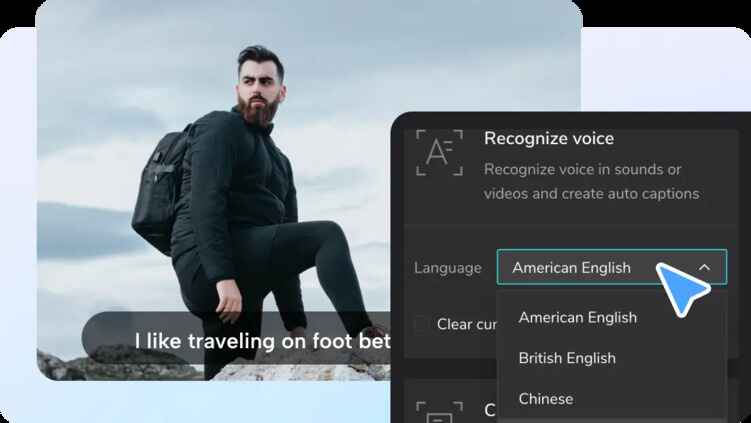Global storytelling is currently being driven by multilingual content. The international audience wants to watch videos in their own languages. Subtitles are at the core of such a change. Accessibility needs have grown, and therefore, inclusive video editing applications are imperative. The CapCut App is a mobile-first solution that makes creating global videos easier. With its multilingual subtitle AI caption generator, you can now reach a broader audience.
The Significance of Multilingual Subtitles
Subtitles are not a mere display of text. They open the doors to the rest of the world, particularly non-native speakers or speakers who are deaf or hard of hearing. Through multilingual subtitles, you are able to make your videos more inclusive. This results in increased reach and improved engagement on social platforms like TikTok and YouTube. Multilingual subtitles also enhance search visibility. By indexing transcripts and captions, search engines can improve the discoverability of your video. Providing proper subtitles in other languages will support your SEO efforts, as it will attract international traffic.

Multi-Language Recognition
In the CapCut App, you don't get just speech-to-text. It features real-time voice detection, ensuring accurate transcription despite accents or dialects. You do not have to worry about ill-fitting words or poor wording. The application accurately captures different regional accents. You also have native translation. This implies that no third-party applications or tools are needed. All this occurs within the CapCut App, making it quick and easy. And, whether you desire the captions in Spanish, Arabic, or Japanese, the CapCut App has more than 20 languages.
The Ways Translation Features Optimize Your Process
Time is an issue in video editing. One tap and you can make subtitles with the CapCut App. You select the spoken language, the language you desire to translate, and the captions are automatically displayed. This aspect eliminates the use of outside captioning companies. You have total control, and you do not use third parties. You may also edit and proofread in the app. You can correct mistakes, change grammar, and set the tone to suit your matter. All of this is accurate and fast due to the AI lab behind this functionality.

The result? A less convoluted process in which you remain creative rather than concerned with the logistics of translation. You save time and money and still provide professional-quality subtitles. This simplified solution is ideal for individual creators or groups that work with large amounts of content.
Tips on Internationalization
To capture cross-cultural viewers, it would be advisable to employ dual-language captions. The original has one line, and the translation just one. This helps in learning a language and instills trust. Additionally, ensure that the fonts you use allow special characters, such as Arabic writing or Chinese symbols. Use neat, legible fonts that retain their clarity on small screens. Ensure that the cultural tone of the message always accompanies translations. Direct translations do not necessarily convey emotional overtones. You may change translations to support the intended meaning in the long run.
Exportation to the World Stage
When creating your captions, ensure they are platform-independent. The CapCut App can support both hard-coded (embedded) captions and subtitle files. Export your video to the appropriate format so it can be used on TikTok, YouTube, or Instagram. Decide whether to burn subtitles into the video or leave them in discrete tracks. In any case, your video will not lose its clarity and accessibility. One of the most essential features of the CapCut App AI video maker is the ability to send your localized content globally, allowing you to share it with the world with a single tap.

Translate and Caption with Ease
Step 1: Start CapCut and Upload
First, install the CapCut app via the App Store or Google Play. Open the app and tap "Auto captions". Pick the video you want to subtitle from "Albums", "Spaces", or "Library". Hit "Add" in the bottom-right corner to begin the process.

Step 2: Generate in Any Language
Once your video is imported, decide if captions should come from the video or a voiceover. If you’re using an audio track, choose voiceover via the "Generate from" tab. CapCut auto-detects the spoken language or lets you choose manually through the "Spoken language" setting. Select a caption style in "Templates". Under "Advanced options", you can opt for dual-language subtitles or auto-translate the audio into over 20 languages. Tap "Generate" when ready.

After generation, edit the subtitles to your liking. Under "Style", adjust the fonts, effects, and animation. You can also refine text under "Edit captions", delete unnecessary lines, or use "Duplicate" to create another layer. Remove any unwanted captions using the "Delete" feature for clean, multilingual results.

Step 3: Export and Share Anywhere
To finalize, go to "AI ultra HD" and modify video resolution or frame rate. Tap "Export" at the top right. Your multilingual video will save to your device and can be uploaded directly to social platforms like Facebook, TikTok, and Instagram.

Conclusion
Adding subtitles in over 20 languages expands your video’s global potential. The CapCut App simplifies this because it has built-in tools. You enhance accessibility, increase SEO, and reach wider audiences. Use AI-powered captioning to simplify workflows and focus on storytelling. If you aim to grow internationally, this is the right time to start localizing your content with multilingual support.



















